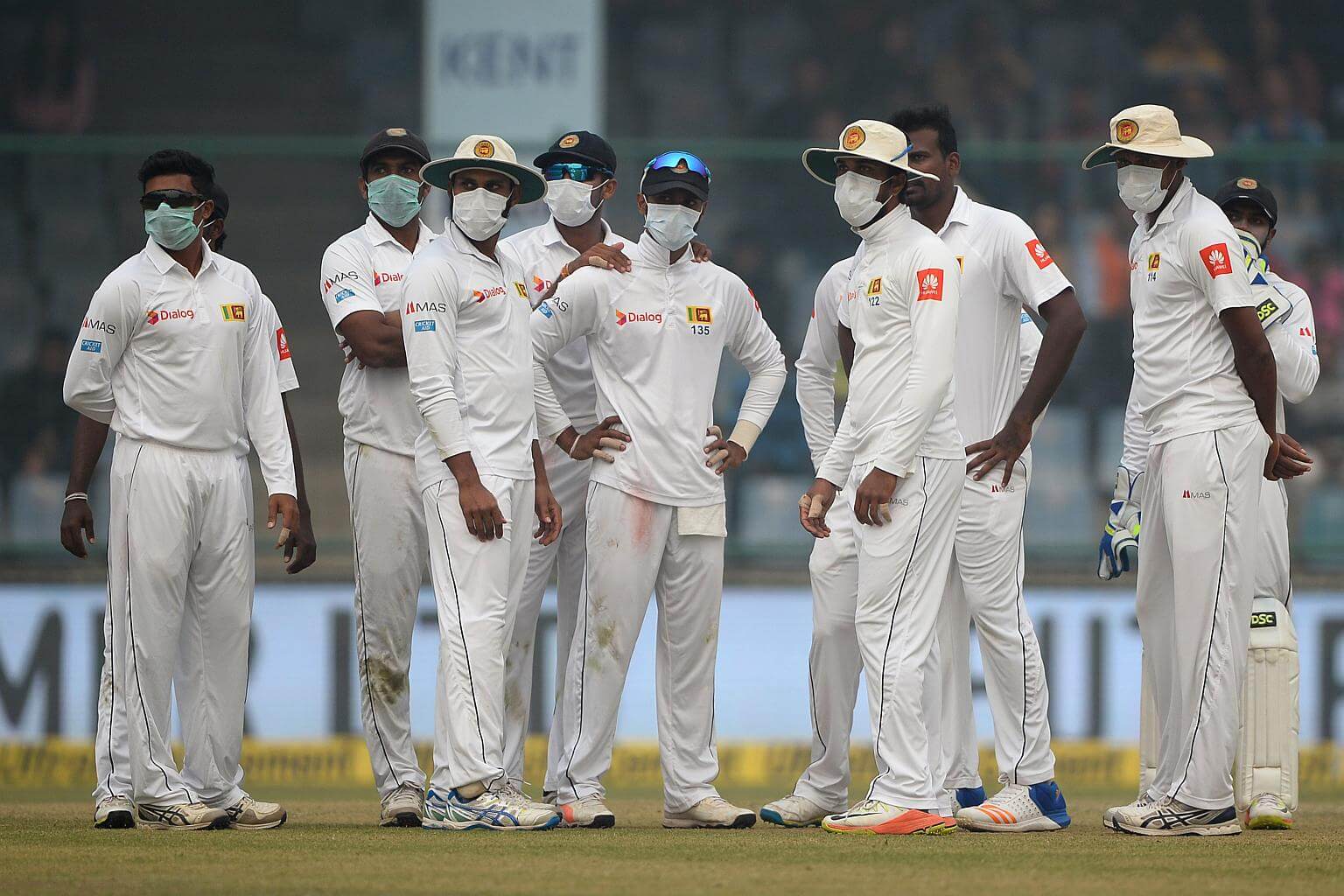Cricket: Pollution stops play for about 20min on second day of India-Sri Lanka Test in Delhi
Sign up now: Get the biggest sports news in your inbox

Sri Lanka cricket players wear masks in an attempt to protect themselves from air pollution during the second day of their third Test cricket match against India, on Dec 3, 2017.
PHOTO: AFP
Follow topic:
NEW DELHI (AFP) - Hazardous smog interrupted the third Test between India and Sri Lanka in New Delhi on Sunday, with players wearing face masks as air quality dipped in the world's most polluted capital city.
Many of Sri Lanka's fielders returned from lunch on the second day of the Test against India wearing masks amid visible haze at the Feroz Shah Kotla stadium.
The Press Trust of India said it was the first time in the 140-year history of Test cricket that an international side had taken to the field in face masks.
A short while later, play was halted for around 20 minutes as Sri Lanka complained to the umpires about the smoggy conditions. The umpires consulted the match referee, team doctors and physiotherapists before deciding to resume play.
The US embassy website on Sunday showed levels of the smallest and most harmful airborne pollutants in Delhi at 328 - more than 10 times the level considered safe by the World Health Organisation (WHO).
The visitors protested twice more, and pacemen Lahiru Gamage and Suranga Lakmal returned to the pavilion, leaving the Sri Lankans running short of fielders.
This prompted Indian skipper Virat Kohli, who became the first international captain to hit six Test double centuries after he cracked a career-best 243, to declare his first innings on 536 for seven to get the Sri Lankan fielders off the ground.
The islanders were booed by Indian fans as their opening batsmen walked to the crease.
Play is routinely suspended due to poor weather, low visibility, lightning or rain but a stoppage as a result of pollution is almost unheard of.
"It is definitely a first of its kind," said one commentator on the official television broadcast.
At tea, the visitors were reeling at 18 for two but recovered to 131 for three at stumps.
Indian sports commentator Ayaz Memon said the dramatic scenes sent an "unedifying message about Delhi's pollution" and urged the authorities to combat the scourge.
Health risk
But India's powerful cricket board was less than impressed and said it would write to its Sri Lankan counterparts about the incident.
"If 20,000 people in the stands did not have problem and the Indian team did not face any issue, I wonder why Sri Lankan team made a big fuss?" said C.K. Khanna, acting president of the Board of Control for Cricket in India.
Last month, more than 30,000 runners competed in the Delhi half marathon, despite dire health warnings from doctors who called for the race to be postponed.
Doctors warn that competitive exercise during severe pollution can trigger asthma attacks, worsen lung conditions and increase the risk of heart attacks and strokes.
Other top-level sporting events in Delhi, such as international cricket and golf tournaments, have attracted less attention despite the hazardous levels of pollution.
A smog outbreak last month in the Indian capital - an incident described by doctors as a public health emergency - saw schools shut for days as pollution soared to 40 times the safe WHO levels.
Delhi's air quality typically worsens in winter as cooler air traps pollutants near the ground, preventing them from dispersing into the atmosphere - a phenomenon known as inversion.

